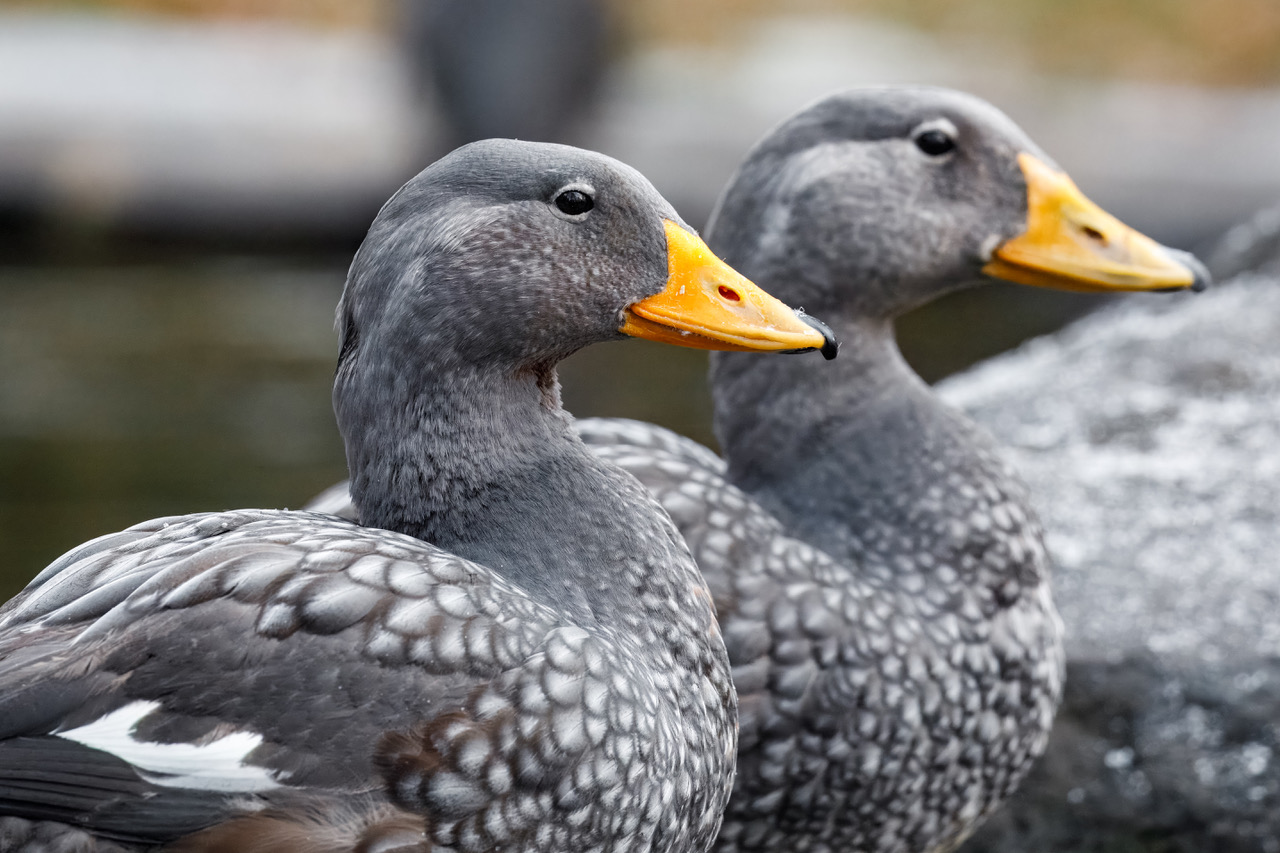
If our keepers decided to give them names, I would propose names Vltava and Vyšehrad, and at the same time I would ask Prague Steamboat Company to become their sponsor. I am talking about the couple of Fuegian steamer ducks, which in our zoo share the enclosure with Humboldt penguins.
Fuegian steamer ducks belong to the group of four species of the Tachyeres genus, which, translated to Czech, means nothing else but “fast rower”. In English these Anseriformes have the collective name “steamer ducks”. Three of four species are not capable of flying at all, and one of them can manage it only with great difficulty. Fuegian steamer ducks (Tachyeres pteneres), which you can see in our zoo, belong to the completely flightless species, which I think is well visible on the photo, where one of the birds has his stunted wings stretched.
Although in our zoo the steamer ducks live together with Humboldt penguins, in the wild they occur more to the south along the west coast of South America, including Tierra del Fuego. There they at a certain time attracted the attention of travellers and researchers including Charles Darwin himself, primarily for their specific way of moving on waters’ surface. When fleeing or defending their territory they use not only their legs to increase their speed, but also their wings, which they use to row intensively, so water is splashing all around. This reminded their discoverers of the then common paddle steam ships, and according to them, they lent their name not only to the birds, but also to their specific movement – they called it steaming.
In our zoo the steamer ducks don’t have many reasons to use steaming, but in the wild they can develop a speed up to 24 km/h for a distance more than one kilometre. That is a very decent performance for a surface vessel. Fuegian steamer ducks would thus easily overtake both Prague paddle steam ships – not only Vltava, which sails at a speed of 16,5 km/h, but also the faster Vyšehrad, which sails at a speed of 18 kilometres per hour.

